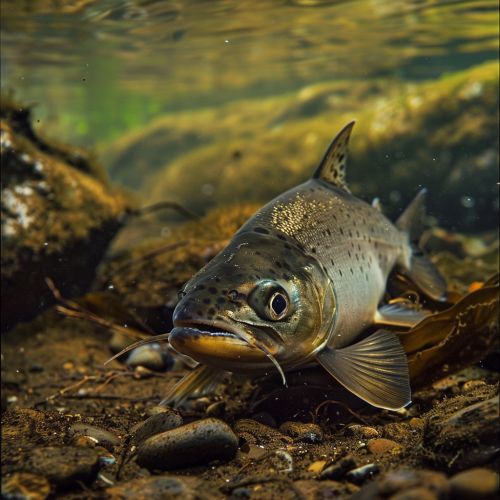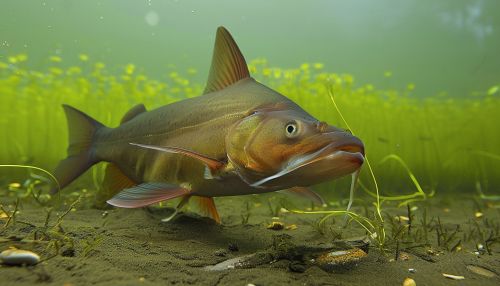Catadromous Fish
Introduction
Catadromous fish are a type of fish that spend most of their lives in freshwater environments, but migrate to the sea to spawn. This behavior is the opposite of anadromous fish, which live in the sea and migrate to freshwater to spawn. The term "catadromous" is derived from the Greek words 'kata', meaning 'down', and 'dromous', meaning 'running'. This migration pattern is less common than anadromous behavior, but is exhibited by several species of fish worldwide.


Biological Mechanisms
The biological mechanisms that drive catadromous migration are complex and not fully understood. However, it is believed that changes in salinity, temperature, and light levels can trigger the migration. These environmental cues are thought to interact with the fish's internal endocrine system, leading to changes in hormone levels that stimulate the fish to migrate.
Species
Several species of fish exhibit catadromous behavior. The most well-known of these is the eel, particularly the European eel (Anguilla anguilla) and the American eel (Anguilla rostrata). Other catadromous fish include the bull shark (Carcharhinus leucas), which can tolerate both freshwater and saltwater environments, and several species of goby.
Migration Patterns
The migration patterns of catadromous fish are highly variable and depend on the species. Some fish, like the eel, undertake long and arduous journeys from their freshwater habitats to the sea. Others, like the bull shark, move between freshwater and saltwater environments more frequently.
Impact on Ecosystems
Catadromous fish play a crucial role in their ecosystems. Their migration patterns help to distribute nutrients and energy between freshwater and marine environments. This can have significant effects on the food web and overall ecosystem health.
Threats and Conservation
Catadromous fish face numerous threats, including habitat loss, pollution, overfishing, and climate change. These threats can disrupt their migration patterns and have serious impacts on their populations. Conservation efforts for catadromous fish focus on protecting their habitats, regulating fishing practices, and monitoring population trends.
